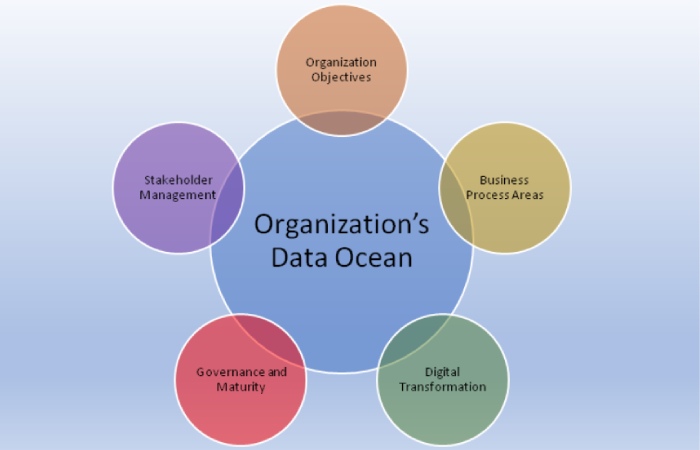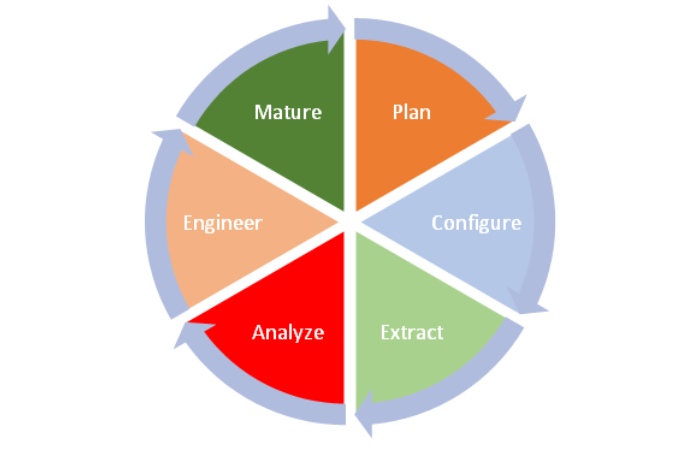The desire for automation emerged from the fact when the enterprises figured that their increasing scale operational costs, due to repetitiveness in their process, is not staying marginal in nature. Thus, increased revenue was also resulting in increased cost, keeping flattened profitability %. This raised serious questions about the use of technology to curb manual labor. However, process automation should not be used as a mere cost-cutting tool, because then its benefits will also become short-ranged.
This brought us to the introduction of traditional RPA, which helps complete repetitive, rule-based tasks by code instead of a human. More the processes are understood in detail more scope of automation becomes apparent. This goes without saying that the accuracy of implementation solely relies on the clarity of the processes. New age automation is well placed to make AI-driven inferences from event logs to further enhance, automate, and monitor implemented business processes.
An enterprise over a period of operations exudes an enormous amount of transactional data reminiscent of their daily running business processes. Using the same data to understand inefficiencies of processes is a huge capability imparted by Process mining tools. In many situations, when enterprises embarking upon improving their existing process do struggle to find documentation around their evolving processes, then Process mining can reverse refer from the database based on Case ID, Activity Name and time stamp and generate process flows and help build those documents. Retracing data footprint to visualize an existing process is quite an amazing feat.
We can clearly, thus, see the interaction between business processes, as opposed to what organizations think they are doing. This capability is a mirror to direct the organizations in the right direction to address both performance and compliance issues.

Data lies at the center of it all. An organization’s growth strategies are not arbitrary but are on solid foundations of financials. These financials are dependent on the organization’s business transactions. It goes without saying that business transaction data comes from business processes. If one must improve profitability, it is evident that this will impact the business processes (either through re-engineering or automation or both). Exhibit 1 echoes this fact.
Thus, data analysis is the key, and there are multiple ways to realize this in the intelligent automation space.
- Predictive analysis: With the help of machine learning models, upcoming flow path and user behavior can be predicted to find the next best action.
- Process Simulation: This methodology helps find bottlenecks in the drawn-up process and measure the impact of potential changes. This is important from an automation and resourcing point of view around operations. Before implementing it, process simulators give the enterprise to emulate a“to-be” view and thus an opportunity to conduct what-if scenario analyses.
- SLA reporting: Most instance-based solutions (BPM/RPA) come with an out-of-the-box feature by the virtue of which time planned versus time spent can be measured for a certain task for an end-to-end process. This information will help in optimizing the processes and subsequently result in savings.SLA Reporting would also improve the end-customer experience, as supervision around critical tasks will become digitized.
- Process discovery: Through event data, process mining tools can help build the process maps, which give an insight into the process which is executing on the ground (and not just on paper). In case there is any deviation corrections can be subsequently made, wherever applicable.
- Process Evolution: Instance-based systems with long-living processes can have sibling instances with variations in-process data because processes evolve. Modern automation systems capture and mark events to ensure appropriate reporting.
- Run time RCA: Most instance-based solutions (BPM/RPA) come with a run time dashboard to display issues or exceptions as the process encounters. This information also gets captured in process logs which can in turn help in finding scenarios and their points of failure in processes. This helps in making the process automation more robust both functionally and non-functionally.
It is evident that Process mining can not only help discover the existing processes but also help in maturing them post-re-engineering. Thus, it is very important to under the various stages of the Process Mining Life cycle.

Plan: Identify existing processes and define target KPIs and dimensions of success.
Configure: Find a mechanism to fetch data from the source system for process mining engines and create a de-normalized data model to store the same.
Extract: Perform ETL operations through schedulers, wherever applicable, and ensure validation and subsequent data load to the de-normalised data model for fast analysis.
Analyze: Process mining tools automatically determine all process task paths along with the variables associated with each task for complete visibility. This blueprint can be used by the process analyst to find compliance with respect to business needs and industry benchmarks. Apart from transactional data, event logs also help immensely to enrich the visualization and spotting of points of failure and their root causes.
Engineer: Post analysis, we can determine business process automation potential. Repeatable Processes across multiple applications become RPA candidates. Processes requiring integration with systems and changes in design would require the support of BPM technologies.
Mature: Post-implementation, continue monitoring transactional data and event logs across systems, and continue to analyze and get insights around inefficiencies and improvement by use of intelligent interpretive engines provided by process mining tools. Applications do have system boundaries and binding non-functional requirements. End-user communication and training can also help avoid breaching those boundaries.
Unfortunately, Digital Transformation is a term loosely used around any technological change. As many enterprises would like to justify and glorify returns based on their technological investments. Transformation must make the end-user experience richer and easier with increased shareholder returns. Thus, to stay relevant business leaders are increasingly relying on intelligent process automation with continuous business value delivery using Safe agile and DevOps delivery mechanisms. Like every important change, a successful transformation journey must involve appropriate messaging and change management. This messaging should percolate from the CEO to not only the grass-root level employee but also to the impacted customer base.
This ensures all the parties are informed, aligned, and engaged with the upcoming journey towards a better tomorrow.
Author’s Bio –

Diptojeet Mukhopadhyay’s – Delivery Head – Tech Mahindra Business Process Services
Diptojeet Mukhopadhyay is Digital Process Automation expert with 23 years of end-to-end automation delivery experience across the globe. He has experience in Customer management, Practice &CoE Management, and Technical Delivery Management etc. Diptojeet comes with deep expertise in DPA Transformation leveraging market-leading tools and technologies. He has also been engaged in multiple consulting studies across the globe for some of the leading brands across North America, UK, the Middle East and Australia. He is also a Togaf 9 certified Enterprise Architect with additional certifications in UiPath, Appian and Pega.

